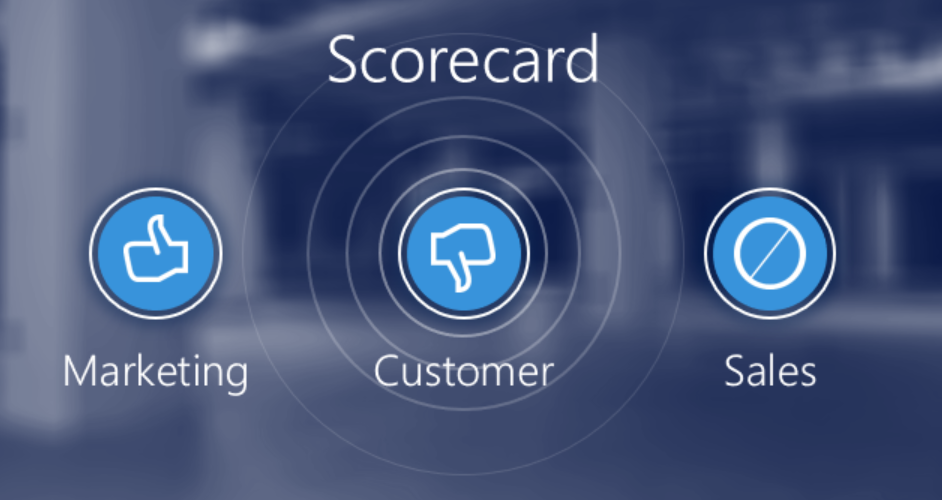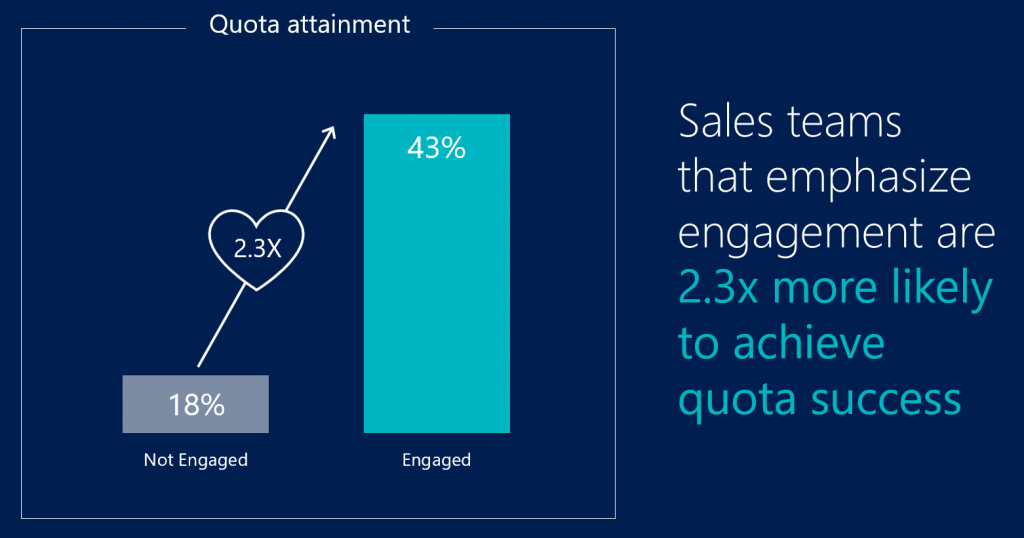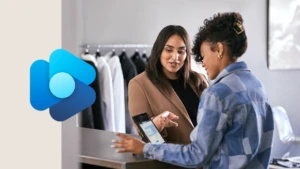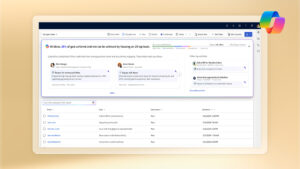
A new hybrid sales model—Empowering sellers to drive customer engagement at scale
As sales leaders, we have a strategy problem. We have spent years focused on sales productivity—visibility into forecast, pipeline, and activity tracking—to drive an agenda for sales management. We use our sales tools to better manage our sellers versus empowering our sellers to deliver value to our customers.
Because of amazing innovations in sales and marketing, we currently have access to the best tools and the most data ever. Unfortunately, the misalignment of strategy and execution of our sales and marketing tools sets us up to fail. And this misalignment is causing huge issues, including overwhelming our sellers, creating inefficient methods of retrieving data, and making it impossible to establish actionable insights and understand our customer needs. All these issues impede our efforts to deliver value to our customers—and they frustrate our sales force.
How today’s data explosion and automation proliferation affect buyers
I recently spoke to a friend, John, who just launched a new business. He’s ready to expand and is looking for telesales software. The other week, he received an email from a telesales vendor who wanted to set up a meeting; the email targeted enterprise accounts.
He deleted it.
John received a second email targeted to big companies.
Again, he deleted it.
The emails continued and each time missed the mark. John wrote off the vendor. When he told me the story, I surprised him by recommending their SMB solution. He decided to give them a second chance.
The next day, not surprisingly, John received another email from the same vendor. This email included a special offer—a free, 90-day trial. He clicked, filled out a short form, and within 5 minutes received a call from a sales rep at the company. The sales rep launched immediately into his pitch without asking any discovery questions. When the rep finally paused, my friend asked about the free trial. The rep knew nothing about the trial, but mentioned they had flexibility on pricing if he wanted to purchase a few seats.
Disappointed, John ended the call.
The next week, he received a similar call from a different rep. No free trial, but the rep was ready to close the deal.
He told the rep not to call again.
The message wasn’t received. The company continued to call again and again. John was so annoyed, pounding his head against the wall, not being able to hit DELETE fast enough on the next email that he saw from the company. He started telling all of his contacts in his industry about the terrible, tone-deaf experience. Unfortunately for the telesales vendor, his peers are the exact people they are trying to target.
So, how’d the telesales vendor do?

From a marketing perspective, it was a success. He clicked on their free trial in the email and marketing got credit for a marketing-qualified lead (MQL). But, was the MQL tied back to an ideal customer profile? Was the vendor targeting the right audience with the right message? Using the current sales model, emphasizing sales productivity, it doesn’t matter, because they’re rewarded with an MQL.
Sales would see this as a neutral interaction because they made contact. He wasn’t ready to buy, though, so they put him back in their nurture bucket.
The customer? He will never do business with them, and most likely, neither will his friends, all because of poorly targeted emails and a disconnect between sales and marketing.
With this interaction in mind, we have to look at how the tools we use to execute our sales and marketing strategy are misaligned. When the core experience we serve up is pathetic, technology becomes our worst enemy by taking that poor experience and magnifying it for the world to see.
Today’s process is pushing our customers to find information on their own. And they are—we’re now compared to our competitors and every buying experience, ever. Yet today’s sales process isn’t a highly engaged, relationship-driven process. Its sole focus is on sales productivity.
At Microsoft, our research suggests a new trend is emerging. We see a new hybrid sales model that blends digital journeys and highly orchestrated one-to-one engagement with our sellers at scale.
Applying buyer engagement and relationship management to drive revenue growth
We asked sales leaders, “What matters most?” Fifty-six percent said productivity is crucial, while 96% said engagement is crucial. So it’s not surprising that the current sales strategy on increasing productivity isn’t working. We found that in this new paradigm, empowering sales reps is more about helping engage with their customers, not efficiency through technology.
Why engagement matters
I wanted to better understand engagement through the lens of both buyers and sellers, and if there was a common definition between these two audience. We did a deep dive with research specifically around this topic and what
Buyers value rep engagement over a purely digital buying experience and see digital content as off-the-shelf and sometimes not relevant. Seventy-two percent of buyers say they value rep engagement, even in the context of consuming digital content, because a rep can provide tailored content and a personalized buying experience. For the first time, buyers are giving us a clear indication they want more than just a digital buying experience.
The notion of sales reps acting as “trusted advisors” who provide more tailored and relevant content, starkly contrasts the common suggestion that buyers want a purely digital buying process, or even that buyers don’t want to engage with sales reps—in fact, our research shows they do.
Sales leaders have always known that engagement matters, even if just anecdotally. But now we know why in more concrete terms.
Our latest research shows that greater engagement is directly correlated to revenue achievement. Specifically, sales teams that emphasize engagement are 2.3 times more likely to achieve quota success compared to those who do not emphasize engagement.

We believe this is just the beginning. As sales and marketing leaders continue building more sophisticated frameworks around this emerging concept of engagement, we may start to see companies bifurcate into two segments—fast growing companies who embrace and use engagement strategically and slower growth companies who disregard or overlook this emerging trend.
Defining engagement
Engagement isn’t an activity, it’s a state
When sellers accurately (and dynamically) map their touches and sales process to their buyer’s journey—with the right touch at the right time—they achieve a state of engagement.
Engagement is driven by 4 factors: Type, Time, Context, and Impact
Engagement is achieved when reps deliver the right type of touch a buyer expects, at the time it is expected or desired in the buying process, in the context of what the buyer needs, with a measurable impact (conversion, trust, etc.).

Engagement isn’t “personal interaction”
It’s all about mapping to each buyer’s unique journey. In the new paradigm of sales, we believe you can no longer say, “Phone calls are more engaging than whitepapers.” Instead, engagement is defined by how closely a particular touch maps to each buyer’s unique journey, how helpful it is, how timely or expected it is, how relevant it is in the context the buyer’s needs, and its impact to the buyer.
What does success look like?
Ok, so you’re thinking, “Now what?” What we need to do is flip our thinking.
Sellers have long correlated relationships with selling, technology with productivity, and engagement with personal touches. Our new sales model is about orchestrating data, technology, people, and automation to gain deeper buyer insights. In other words, we know who to contact, what they need, what to say, what to send, and when to do it.
A 3-step process to empower sellers and drive engagement
- Focus on gaining customer insights
- Start to define your own engagement metrics. There is no single metric today, and it may be hard to define—and that’s ok, because 100% of our respondents—every single one!—said they had a hard time defining it. But as our research shows, even simple metrics on engagement will help drive sales and marketing success.
- Focus on capturing customer insights and creating a dynamic sales process to drive engagement. Ultimately, engagement is about mapping to each buyer’s unique journey. If you know your buyer’s journey but continue in your own sales and marketing cadences and process, you’ll lose engagement. But if you dynamically adjust and map to your buyer’s unique journey, you will drive engagement and have high impact.
- Emphasize engagement
- Begin researching, understanding, and emphasizing engagement as a primary focus of your sales and marketing teams. If your organization follows our research patterns, maybe you will see higher revenue attainment as well.
- See engagement not as “personal touches” per se, but rather as alignment with your buyer’s unique purchasing process—and seek to understand each buyer’s purchasing process.
- Multiply the forces of productivity versus relationships
- Multiply the forces of productivity versus relationships to achieve a state of engagement. In other words, think about productivity and relationships together, instead of in isolation. Digital tools drive rep productivity at scale, and relevant touches drive 1:1 relationships. The combination drives engagement at scale.
Tools to drive engagement and align your data
So how do you leverage the tools and data to empower and drive engagement? Unlock the unique insights that sellers need when interacting with buyers by combining disparate transactional data and relationship data across your CRM, social networks like LinkedIn, and your productivity, collaboration, and email systems. Then, sellers can finally deliver, at scale, the authentic and personal engagement that today’s buyers demand.





